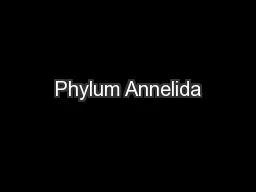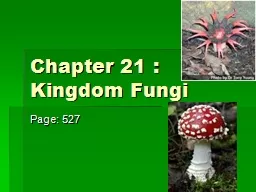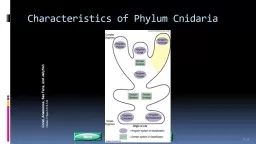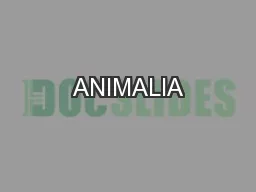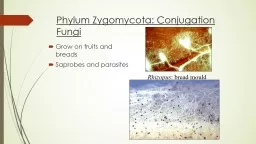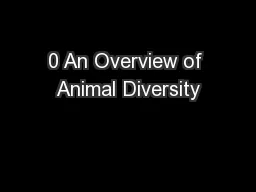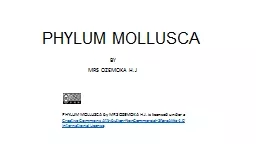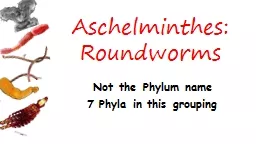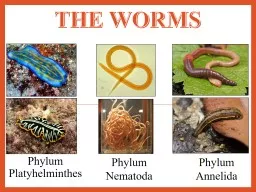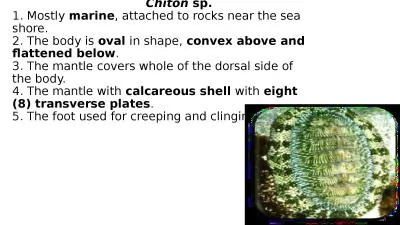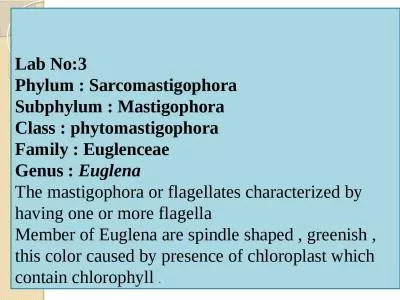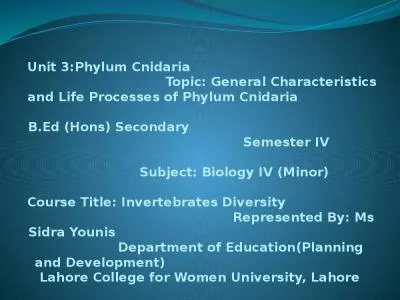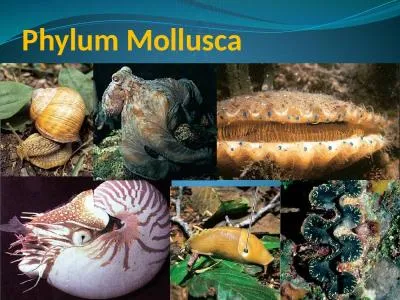PPT-Phylum Molluscs
Author : tatiana-dople | Published Date : 2017-08-18
Prepared by Nada H Lubbad Introduction Soft bodied animals name from Latin word mollus meaning soft The second largest phylum The scientific study of Mollusks
Presentation Embed Code
Download Presentation
Download Presentation The PPT/PDF document "Phylum Molluscs" is the property of its rightful owner. Permission is granted to download and print the materials on this website for personal, non-commercial use only, and to display it on your personal computer provided you do not modify the materials and that you retain all copyright notices contained in the materials. By downloading content from our website, you accept the terms of this agreement.
Phylum Molluscs: Transcript
Download Rules Of Document
"Phylum Molluscs"The content belongs to its owner. You may download and print it for personal use, without modification, and keep all copyright notices. By downloading, you agree to these terms.
Related Documents


